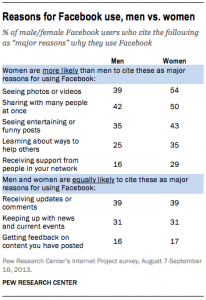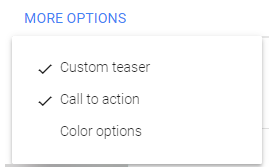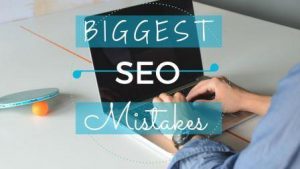
Austin Distel/Unsplash
No matter the type of company you run or the products or services you sell, ad copy has to do one thing: appeal to the reader’s pain points. You have to know what’s keeping your customers up at night, and then you have to show them how you’ll solve those problems.
You can also show them what life will be like after they buy your offer, and you can juxtapose that with what life was like before. By presenting what their life is like now and showing them what their life can be, you make your brand more valuable to them.
You Can Do This with Any Type of Product or Service
Figuring out how your business solves a problem is easy when the problem is incorporated to the solution. For example, most people hate tax season – gathering receipts and sitting down to do your taxes is an obvious headache, no question about it. If you sell easy-to-use tax software or you’re an accountant who will do taxes for your clients, that’s a pretty clear problem-solution setup.
However, what if your product or service doesn’t appeal to such an obvious problem? Let’s say you sell sunglasses or you wrote a lighthearted novel or you’re promoting insulated water bottles. Then what? Nobody’s losing sleep over not having any of these things.
In a case like this, your goal is to show the consumer how their life will improve with your product. The pain point becomes: You don’t have this product yet, and you want to – you just don’t know it.
Whatever type of product or service you offer – obvious problem-solver or less-obvious “life can be greater with this” – there’s a before and after vision to create for the customer.
What Existed Before? What Will Exist After?
Your first step is to answer these two questions:
- What does the customer have now, before your brand shows up to help them?
- What will the customer have after trusting your brand?
Let’s take the sunglasses example:
- Before: Sunglasses that bend or scratch easily.
- After: Sunglasses made from quality materials that won’t bend or scratch, plus a wear-and-tear warranty that will repair or replace damaged sunglasses.
Can your customers continue to wear their crummy sunglasses? Sure. But will they want to when they have your much better sunglasses just a digital shopping cart away? Probably not.
How Will Your Customer’s Feelings Change?
The next two questions are similar to the first two in terms of determining before and after states, but this time, you have to think about your customer’s emotional state:
- How does your customer feel now? (This is considered the “before” state, even though it’s their present state.)
- How will your customer feel when they’re in the “after” state?
- Before: Annoyed! Every time they put on their sunglasses, they’re cockeyed (poor craftsmanship or low-quality materials) or scratched and hard to see through.
- After: Confident and focused on other things. Their sunglasses look great, and they’re so well made and reliable that the customer barely has to think about them at all.
How Will Your Customer’s Average Day Improve?
The questions start getting trickier to answer now, especially if you have a product as simple as sunglasses (the more complex the product, the easier it can be to answer some of these questions).
- What is an average day like for your customer now, i.e., before?
- What will an average day be like after?
Remember, we’re talking about the part of an average day that has to do with your product.
- Before: Outdoor activities become overwhelming because the customer is distracted by their cheap sunglasses. Also, it’s hard to complete an outfit when they don’t have sunglasses they feel confident in.
- After: The customer never hesitates to get outside for a run or hike, a day on the boat with pals or an afternoon spent relaxing on the beach. They know their eyes will be protected and the sun won’t be too bright to enjoy the outdoors – and they’ll look great, too.
What is Your Customer’s Status Before vs. After?
Now it’s time to back up and get a bird’s eye view of your customer’s life before versus after using your product or service.
- What was your customer’s status before?
- What is your customer’s status after?
- Before: Hesitant to enjoy any outdoor activity; frustrated when driving on a sunny day.
- After: Bounding to head outside and take in a beautiful day; safely driving on the road when heading to their destination.
Putting It All Together
Once you’ve answered these questions, you can put together the most compelling parts, and you can do this a few times to come up with a variety of ad copy. Here are a few examples:
- A day at the beach with pals doesn’t have to be a frustrating, headache-inducing experience.
- Never avoid the great (and sunny) outdoors again. These sunglasses are bend- and scratch-proof, and they’re so light you’ll forget you have them on.
- Feel confident and pulled-together with these sunglasses that complete any outfit (and protect your eyes when you’re having fun in the sun).
When it comes to Facebook ads, you can use your copy to guide your imagery, too, whether you’re creating static images or a video. Combining imagery with smartly-worded copy is usually the best option.
Wrapping Up
The main goal of ad copy, no matter what type of business you’re in or what you’re promoting, is to close the gap between what your target customer has now and what they can have sooner rather than later – if they go with your company, of course. By appealing to their pain points – either an obvious one or an “I know things are fine, but this will make things even better” one – you’ll show that there’s value in your product or service. When you can clearly define that value, customers are more apt to take the next step.
Digital & Social Articles on Business 2 Community
(20)






